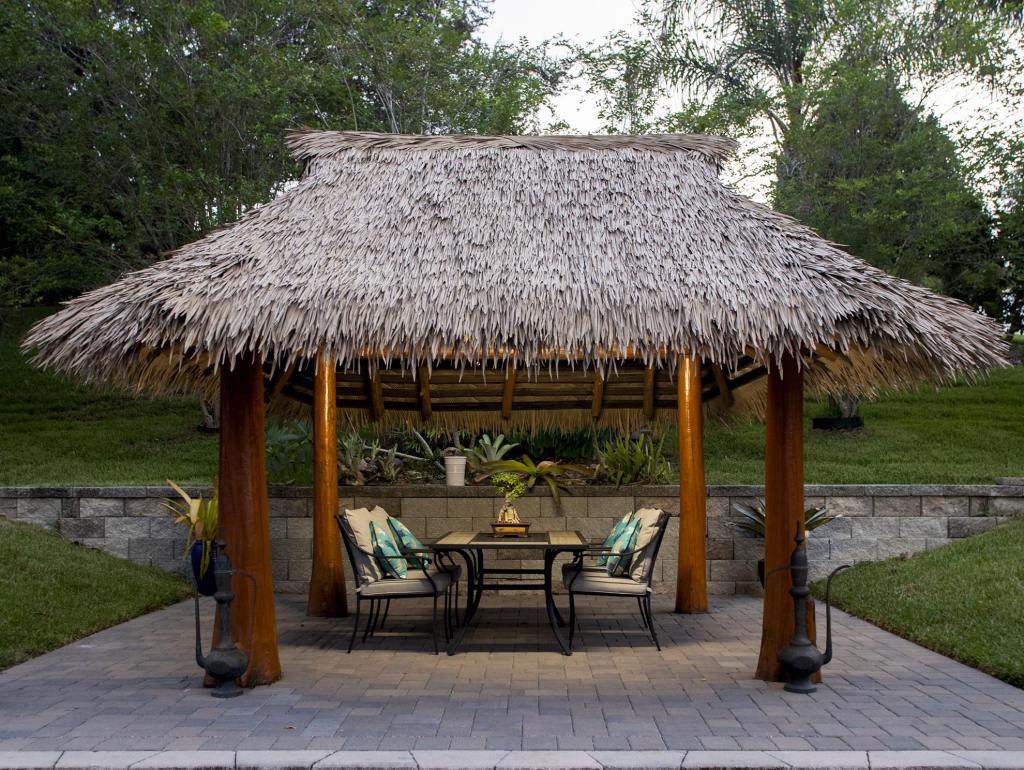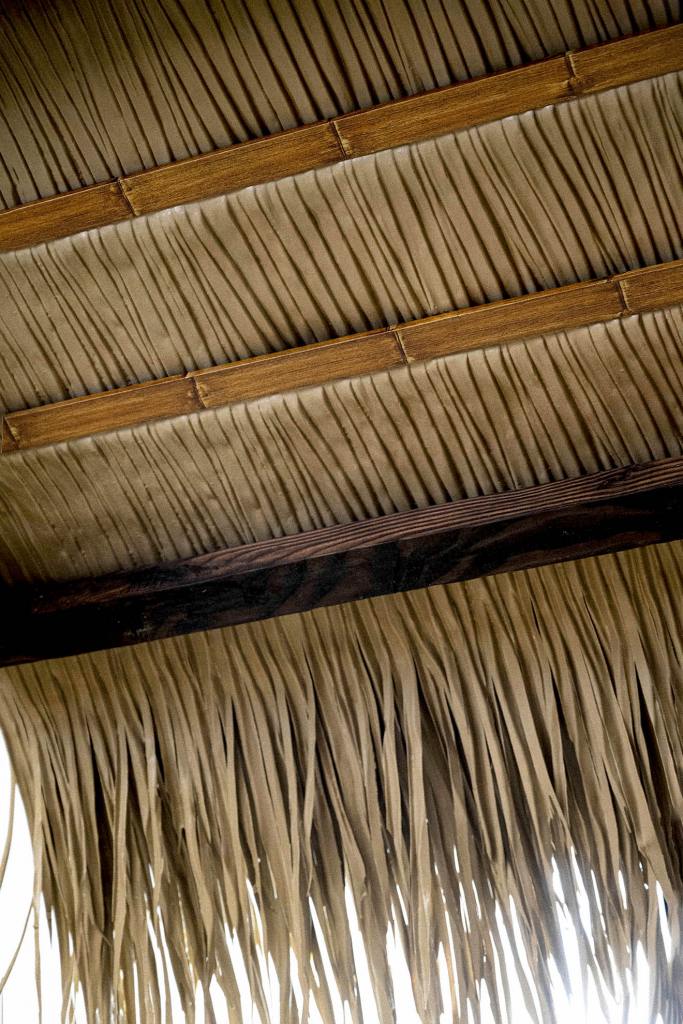Escape to Paradise with Synthetic Thatch: A Roofing Revolution You Won’t Believe!
In the world of architecture and home design, few elements evoke the allure of paradise quite like the tropical aesthetics of thatched roofs. The mere mention of thatch conjures images of exotic getaways and serene island retreats. However, as architects and home designers are well aware, the beauty of natural thatch comes with a set of challenges that cannot be ignored.
Allow me to introduce you to a roofing revolution—one that might just change the way you think about creating tropical paradises within your architectural designs. Synthetic thatch, a modern alternative to traditional thatch roofing, offers a remarkable solution that addresses the limitations of its natural counterpart. As an expert in this field, I’ve witnessed firsthand the transformative power of synthetic thatch, and I’m excited to share its possibilities with you.
Years ago, while working on a resort project in a tropical paradise, I encountered the exquisite appeal of thatched roofs. The ambiance they created was undeniably enchanting, yet I couldn’t overlook the practical challenges they posed. The constant maintenance, susceptibility to weather, and safety concerns became apparent as I delved deeper into the project. It was at this point that I began exploring the alternative—synthetic thatch—and my perspective on architectural design was forever changed. Now, I’m eager to convey the benefits and creative opportunities this roofing revolution offers to architects and home designers like you.
 The Allure of Tropical Architecture
The Allure of Tropical Architecture
In the realm of architecture, tropical aesthetics have always held a timeless and irresistible allure. Think about the serene beaches of Bali, the luxury resorts in the Maldives, or the tranquil huts tucked away in the heart of the Caribbean. These picturesque settings, often characterized by their use of thatched roofs, transport us to a world of relaxation and natural beauty.
Thatched roofs, with their rustic charm and organic textures, have been pivotal in creating the exotic, resort-style atmospheres that have captivated travelers for generations. As architects and designers, you understand the transformative power of these aesthetics. They have the ability to turn a simple structure into a breathtaking escape, seamlessly blending the indoors with the outdoors.
Yet, before we delve into the remarkable world of synthetic thatch, let’s take a closer look at the limitations that often plague traditional thatch roofs—the very limitations that synthetic thatch has been designed to overcome.
Let’s embark on a journey to understand how synthetic thatch can help you escape to paradise within your architectural designs.
The Downside of Natural Thatch
While traditional thatched roofing undeniably delivers on aesthetics, it is not without its share of practical challenges and drawbacks. As architects and designers, it’s essential to consider these limitations when incorporating thatched roofs into your designs:
- Maintenance: Natural thatch demands regular and labor-intensive maintenance. The need for rethatching every few years can be a considerable burden on homeowners, resort operators, and your clients.
- Durability: Traditional thatch is susceptible to various forms of wear and tear. Weather, pests, and decay can significantly impact its lifespan, leading to premature deterioration.
- Safety Concerns: Fire safety is a paramount concern when dealing with thatched roofs. The inherent flammability of natural thatch poses a risk that cannot be ignored.
- Availability: Natural thatch materials can be inconsistent in quality and availability, making it challenging to source the right materials for your projects. Pricing fluctuations further complicate the matter.
Synthetic Thatch: A Game-Changer
In the ever-evolving world of architecture and design, innovation often takes the form of solutions that tackle existing challenges. Synthetic thatch emerges as one such game-changing innovation—a modern alternative that effectively addresses the limitations of traditional thatched roofing. Let’s dive into the benefits that make synthetic thatch an architect’s and designer’s dream:
- Durability and Longevity: Synthetic thatch is designed to stand the test of time. Unlike natural thatch, it is impervious to weather, pests, and decay. Your clients can enjoy the beauty of thatch for years to come without worrying about frequent replacements.
- Low Maintenance: Say goodbye to the constant upkeep natural thatch demands. Synthetic thatch requires minimal maintenance, freeing up time and resources for other aspects of your architectural projects.
- Weather Resistance: Whether you’re working on a project in a humid tropical climate or a harsh, unpredictable environment, synthetic thatch can withstand it all. It won’t degrade under the scorching sun, heavy rain, or strong winds.
- Fire Safety Features: Safety is paramount in architectural design. Synthetic thatch often comes with fire-resistant features, significantly reducing the risk associated with traditional thatch.
- Aesthetic Authenticity: One of the most remarkable aspects of synthetic thatch is its ability to authentically replicate the appearance of natural thatch. Your clients can enjoy the picturesque charm of a thatched roof without compromising on practicality.
- Eco-Friendly: In an era of increasing environmental awareness, synthetic thatch also shines as an eco-friendly choice. Many synthetic thatch materials are made using sustainable processes and recycled materials.
During a project in the Florida Keys, where the climate can be unforgiving, I had the opportunity to offer synthetic thatch into the design of a beachfront resort. The client had a vision of capturing the essence of a Caribbean paradise, complete with thatched roofs. The decision to opt for synthetic thatch was driven by a desire for longevity and the assurance that the resort could withstand the tropical elements without constant repairs.
 The outcome was exceptional. The resort’s architecture seamlessly blended with the surrounding natural beauty, and the synthetic thatch added an authentic touch. Over the years, the resort has remained a symbol of luxury and sustainability, standing as a testament to the game-changing potential of synthetic thatch in architectural design.
The outcome was exceptional. The resort’s architecture seamlessly blended with the surrounding natural beauty, and the synthetic thatch added an authentic touch. Over the years, the resort has remained a symbol of luxury and sustainability, standing as a testament to the game-changing potential of synthetic thatch in architectural design.
At The Supply Scout, we are thrilled to introduce you to the world of Nipa Synthetic Thatch, available at Thesupplyscout.com. We are committed to assisting you in turning your design visions into reality with this innovative roofing solution. Now, as architects and designers, you have the exclusive opportunity to harness the potential of Nipa Synthetic Thatch and reshape the landscape of tropical architecture. In the following sections, we will delve into the design flexibility, installation process, and cost considerations that make Nipa Synthetic Thatch an indispensable addition to your architectural toolkit.
Design Flexibility with Synthetic Thatc
One of the most exciting aspects of synthetic thatch is its capacity to provide architects and designers with unparalleled design flexibility. Whether you’re envisioning a resort-style bungalow, a contemporary beachfront villa, or a rustic tropical retreat, synthetic thatch can help you bring your creative vision to life:
Creative Freedom: With synthetic thatch, you’re not bound by the limitations of traditional thatch materials. It can be customized to suit various architectural styles and design preferences, offering an extensive palette of colors and textures.
Shape and Form: Synthetic thatch is highly malleable, allowing you to craft unique roof shapes and intricate designs. Curved or steeply pitched roofs, intricate patterns, and imaginative shapes are all within your reach.
Integration: Whether you’re integrating thatched roofs with contemporary building materials or blending them with natural surroundings, synthetic thatch can seamlessly adapt to your design aspirations.
In a recent project, a client approached us with a vision of a tropical-inspired, open-air pavilion. They wanted a thatched roof to evoke the feeling of an island retreat. While the idea was enticing, the design required a high degree of customization to ensure the roof not only met the aesthetic goals but also integrated with the pavilion’s modern architecture.
Synthetic thatch proved to be the perfect solution. Its flexibility allowed us to achieve the distinctive, sweeping curves the client desired while also ensuring long-lasting durability. The end result was a stunning fusion of tropical aesthetics and contemporary design, creating a unique space that left the client and their guests in awe.
 Installation and Maintenance
Installation and Maintenance
Now that we’ve explored the design potential of synthetic thatch, let’s delve into its practical aspects:
Installation Process: Synthetic thatch systems are designed with ease of installation in mind. They are often similar to installing traditional roofing materials, making them accessible to roofing contractors and DIY enthusiasts alike. The Supply Scout provides comprehensive installation guides and support to ensure a smooth process.
Maintenance: Unlike natural thatch, which requires ongoing maintenance and frequent rethatching, synthetic thatch is virtually maintenance-free. It doesn’t attract pests, won’t rot or mold, and doesn’t require regular treatments. This means your clients can enjoy the beauty of thatch without the hassle.
Cost Considerations
While various options for synthetic thatch exist in the current market, it’s important to note that Nipa Synthetic Thatch, available through The Supply Scout, stands out as one of the most cost-effective choices available today. Although the initial investment in synthetic thatch may surpass that of natural thatch, it’s imperative to take into account the substantial long-term savings and advantages:
Longevity: Synthetic thatch roofs can last for decades without the need for replacement, reducing the lifetime cost significantly.
Maintenance Savings: Lower maintenance requirements translate to fewer ongoing costs, saving your clients both time and money.
Enhanced Property Value: The aesthetic appeal and durability of synthetic thatch can enhance property value, making it a wise investment for your clients.
Client Satisfaction and Market Demand
As architects and designers, your ultimate goal is to create spaces that resonate with your clients. Synthetic thatch not only meets but often exceeds client expectations:
Client Delight: Clients are consistently delighted by the authentic look of synthetic thatch and its low-maintenance benefits.
Market Demand: The demand for tropical-themed architecture is on the rise, driven by the desire for unique, memorable experiences. Offering synthetic thatch solutions positions you at the forefront of this trend.
In Summary
In closing, the world of architecture and design is evolving, and with it, the materials and solutions at our disposal. Synthetic thatch has emerged as a revolutionary roofing material, offering architects and designers the opportunity to create tropical paradises that blend beauty with practicality.
As you embark on your architectural journey, remember that synthetic thatch isn’t just a roofing material; it’s a gateway to unlocking your creative potential. It provides the durability, design flexibility, and maintenance ease that can turn your design visions into breathtaking reality.
So, dare to escape to paradise with synthetic thatch. Explore its limitless possibilities, and you’ll discover a roofing revolution you won’t believe you ever lived without. Your clients, like mine, may find themselves in awe of the timeless beauty and modern convenience that synthetic thatch brings to their architectural dreams.

